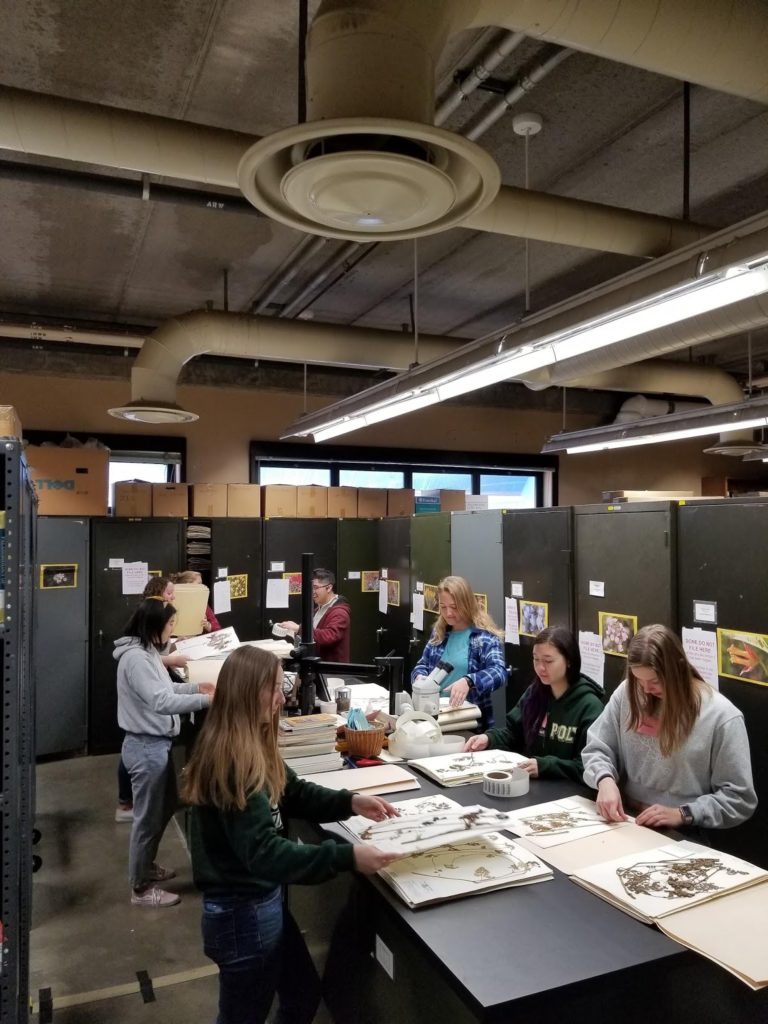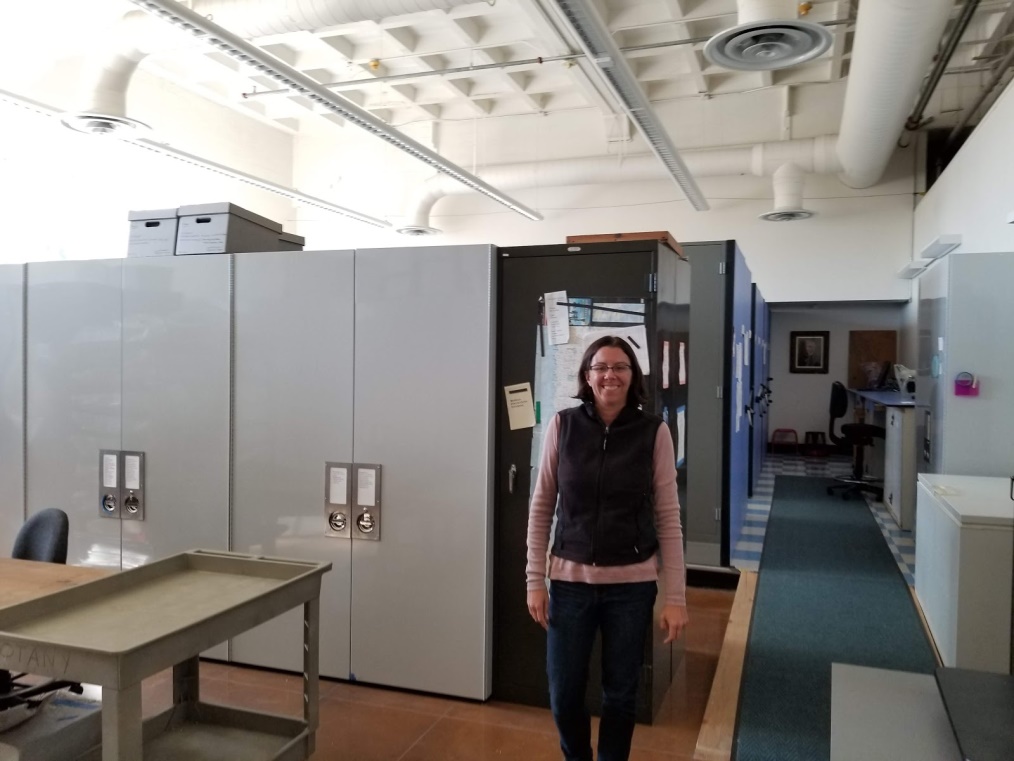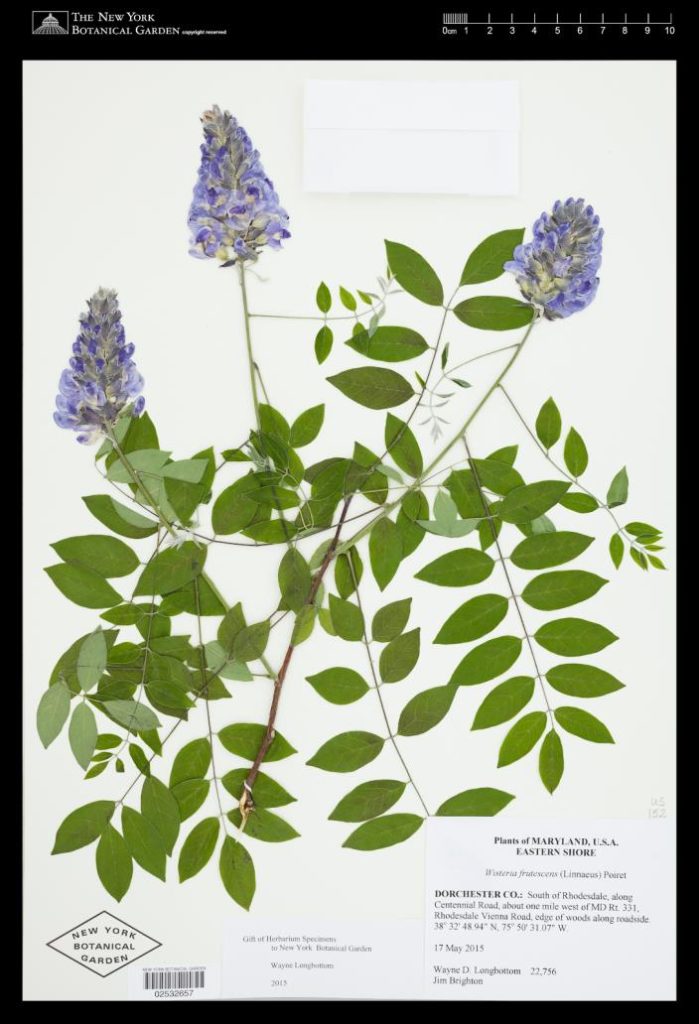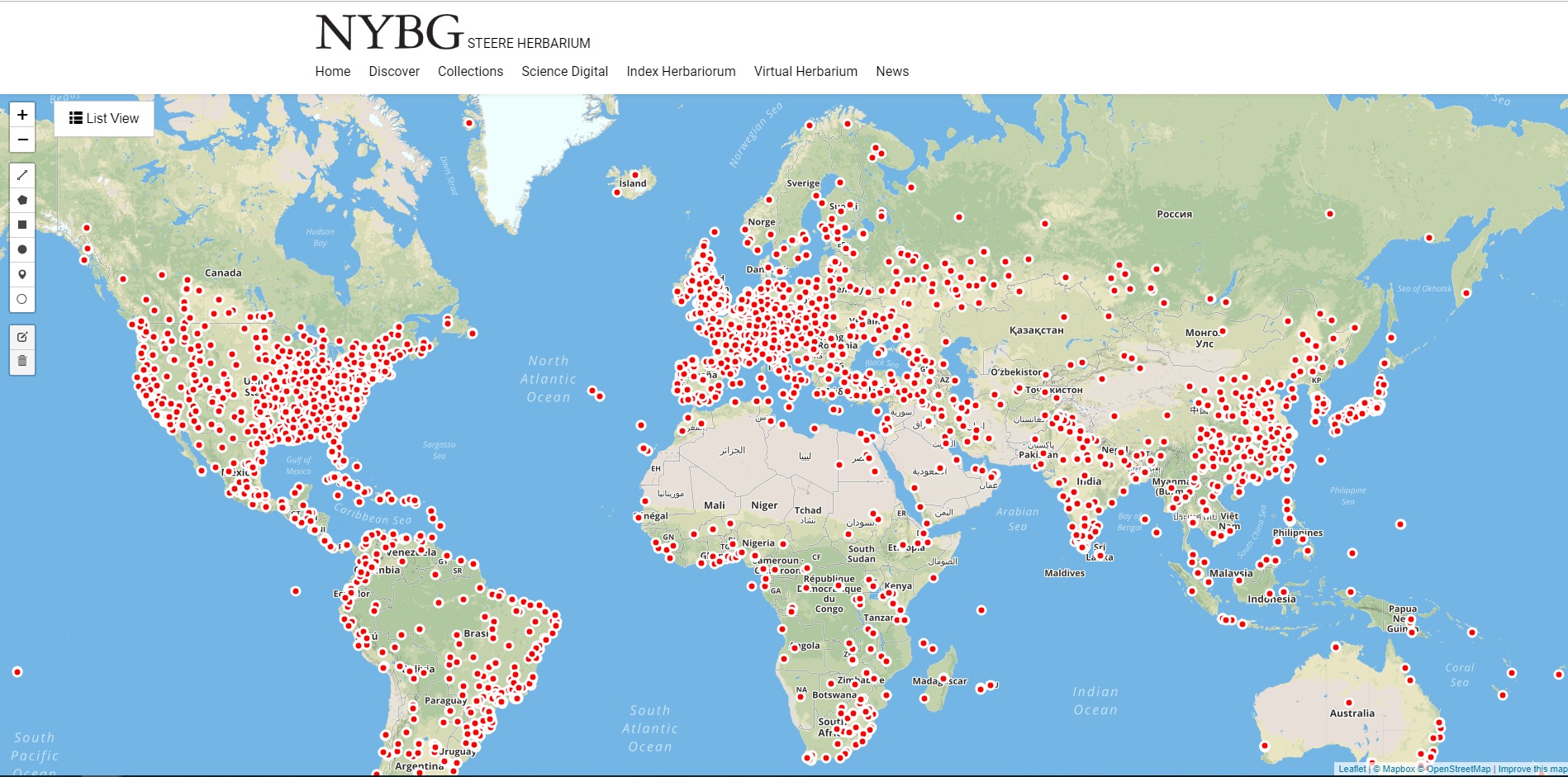What does the Society of Herbarium Curators do?
The mission of the SHC is to promote and expand the role of herbaria in botanical research, teaching, and service to the community at large. The SHC also provides a medium for discussion and collaboration among herbarium professionals, including efforts to protect and preserve endangered herbaria. The SHC works toward its mission through many activities and opportunities, including: Offering student research grants,
Providing access to resources and expertise through the online Curator’s Toolbox, the Herbaria listserv, and our newsletter, The Vasculum,
Sponsoring meetings, hosting innovative symposia, and representing herbarium interests at relevant professional conferences organized by the Society for the Preservation of Natural History Collections (SPNHC), the Botanical Society of America (BSA), and the Citizen Science Association (CSA), to name a few, facilitating a Strategic Planning for Herbaria 7-week online course, curating a social media presence for herbarium-related interests on Twitter and Facebook, and much more…
The SHC is always striving to promote leadership, collaboration, and inclusivity within the herbarium community.
What is an herbarium?
her·bar·i·um
err-BARE-ee-uhm
noun: herbarium; plural noun: herbaria
– a systematically arranged collection of dried plants.
– a room or building housing a collection of dried plants.
– a box, cabinet, or other receptacle in which dried plants are kept.
A herbarium is a collection of pressed, preserved plants that is stored, catalogued, and arranged systematically for study by professionals and amateurs from many walks of life. Herbaria are useful for teaching and learning about plants and identifying plant species. Herbaria also house “type specimens,” which are the original specimens upon which scientific names were based. Herbaria can be small (only a couple hundred specimens) to very large (millions of specimens). The plant specimens are stored in metal cabinets to prevent pest invasion, and most herbaria include a workspace, one or many computers with access to a digital catalog or database, dissecting microscopes, important botanical references, and other tools to facilitate exploration and understanding of the specimens. Many herbaria now have digitization equipment such as digital imaging stations, specimen scanners, barcode scanners, and special workspaces for entering specimen data into a database.

Who collects herbarium specimens?
Many different people collect herbarium specimens. Most herbarium specimens are collected by botanists who are studying a particular group of plants or all of the plants in a particular area. People also collect “voucher” specimens if they need a permanent record of the plants they studied for a research project. In addition, amateur and professional botanists collect herbarium specimens when they are learning how to identify plants. It is easiest to identify a plant when you have a physical specimen of it, since the most important characters might be missing from a photo or too small to photograph. You can also go back and look at the herbarium specimen in the future, when you want to compare another plant to the one you already found.

What does an herbarium specimen look like?
Most of the time, herbarium specimens look like dried and flattened versions of wild plants that are affixed to an 11” x 17” sheet of heavy-cotton paper. Botanists aim to represent every unique structure of a plant when preparing a specimen (i.e. leaves, stems, roots, flowers fruit, or other reproductive structures) since any of these may contain diagnostic characters which are useful for identification. Special preservation methods are necessary for plants with structures that are too hard or bulky to press flat. For example, cacti may be sealed in jars of ethanol, and the woody fruit of Brazil nut trees may be stored in plastic bags or cardboard boxes separate from the rest of the specimen. It is essential that every physical component be accompanied by contextual information about the location, date, and conditions under which the plant was collected. All this information, in addition to the current scientific name and history of identifications, is usually written on paper labels that are associated with every part of the specimen. A variety of stamps, barcode stickers, and other administrative markings are also seen on herbarium sheets, each indicating particular facts about the history, usage, and ownership of the specimen by scientists and institutions.


How long do herbarium specimens last?
Herbarium specimens can last for a long time. The oldest herbarium specimens are over 450 years old, though these are very rare. It is, however, fairly common to find specimens between 100 to 200 years old. Herbaria are museums, and the specimens inside are treated with great care. Specimens are mounted on cotton bond paper with neutral pH glue, both of which slow the natural formation of acids that could damage the specimen. Herbaria and storage cabinets protect specimens from fire, humidity, insect pests, and UV light to help them last.
What is the difference between seed banks and herbaria?
Both seed banks and herbaria are places designated for long-term plant tissue preservation. In all other ways, the function and purpose of these facilities are very different. Seed banks primarily preserve seeds in a cold, semi-humid environment, which allows them to remain viable to grow in the future. Herbaria, in contrast, are intended to preserve a detailed record of all plants, and specimens in herbaria are stored in room temperature but dry conditions, which compromises the viability of their seeds but dramatically extends the preservation of their physical characteristics. Their breadth of coverage, coupled with the longevity and relative accessibility of specimens, allows herbaria to function as botanical research libraries, serving as active and expanding references to researchers and the public.
What are plant specimens used for?
Herbarium specimens are useful for identifying plants, and they provide critical data for a plethora of scientific endeavors. Specimens have been used for hundreds of years by plant taxonomists (scientists responsible for naming plant species) to help identify similarities and differences between taxa. DNA can be extracted from plant specimens to determine these evolutionary relationships at a genetic level.
Other scientific fields that use herbarium specimens include biogeography, conservation biology, ecology, plant pathology, ethnobotany, and biodiversity informatics, to name only a few. From specimen data, scientists can learn where and when plants have occurred, what these plants looked like, and, in some cases, what other organisms were associated with them. This can be especially important for tracking, for example, rare and endangered species or invasive species that threaten local ecosystems and agriculture. Specimen data also enable scientists to predict plant distributions and changes in plant characteristics like phenology (i.e., timing of reproduction) or morphology (i.e., appearance).
Specimens not only provide scientific data, but they also serve as inspiration for artists, graphic designers, and scientific illustrators. Specimens are also fantastic tools for introducing plant species in educational settings. For more information about how herbarium specimens benefit science and society, see the following resources:
Heberling JM, Isaac BL. 2017. Herbarium specimens as exaptations: New uses for old collections. American Journal of Botany 104(7):963-965. https://doi.org/10.3732/ajb.1700125
Lang PLM, Willems FM, Scheepens JF, Burbano HA, Bossdorf O. 2018. Using herbaria to study global environmental change. New Phytologist. https://nph.onlinelibrary.wiley.com/doi/10.1111/nph.15401
Lavoie C. 2012. Biological collections in an ever changing world: Herbaria as tools for biogeographical and environmental studies. Perspectives in Plant Ecology, Evolution, and Systematics 15:68-76. https://www.sciencedirect.com/science/article/abs/pii/S1433831912000595
Pyke GH, Ehrlich PR. 2010. Biological collections and ecological / environmental research: a review, some observations and a look to the future. Biological Reviews. 85(2):247-266. https://onlinelibrary.wiley.com/doi/10.1111/j.1469-185X.2009.00098.x

Why do herbaria have so many plants?
Scientists have described nearly 400,000 different species of plants. That is more than six times the number of mammals, birds, reptiles, amphibians, and fish species combined. However, there are orders of magnitude more plant specimens stored in the world’s herbaria (estimated at 387 million). This is because it takes many observations to thoroughly document a single species. Just like humans, plant species can display a broad range of characteristics, habitat preferences, and geographic origins, and no single individual from a specific place and time can represent a species’ complete diversity and geospatial history.
How many herbaria are there in the world?
Globally, there are 3,100 herbaria and 12,000 associated staff where a total of 390 million botanical specimens are stored. Individual herbaria can be found in an online directory known as Index Herbariorum.
They vary in size from small, local synoptic or teaching collections at nature centers and schools to enormous research collections at universities, museums, and botanical gardens. All herbaria, large and small, play a vital role in preserving biodiversity data. Often, smaller regional herbaria contain records of their local flora that can be found nowhere else on earth!
To find out which herbaria are near you search the Index Herbariorum.
What is herbarium digitization and why do we do it?
Herbarium digitization is the process of making analog (i.e., paper and ink) specimen information into digital data (i.e., computer documents). This often involves transcribing data that is on specimen labels, encoding written location information as latitude and longitude, and creating high quality photographs or scans of the specimens. Digitization makes the specimens and their data available for researchers all around the world, so they do not have to visit the herbarium or request a loan of those specimens. Digital specimen data is also valuable for computerized analyses, such as creating models that predict where plants will occur in the future.
Many herbaria are in the process of digitizing their collections and making them available to the public. Online databases and data portals such as the Global Biodiversity Information Facility and iDigBio are only a few examples. In the U.S., the National Science Foundation has an ongoing program to fund the digitization of natural history collections. Other countries are investing in collections digitization as well.
Once collections are imaged, volunteers from all over the world can help digitize specimen information through citizen science platforms such as Notes from Nature, Les Herbonautes, and DigiVol.
What are the greatest threats to herbaria?
Insects, fire, and moisture are the greatest threats to most herbarium collections. Since herbarium specimens are stored in cabinets, and some folders may not be opened very often, it is easy for an infestation of cigarette beetles, booklice, or other insect pests to damage quite a few specimens before they are detected. Dried plants and paper are both very flammable and fire would rapidly destroy specimens. Water from fire hoses and automatic sprinklers can also destroy specimens, and high moisture environments encourage mold growth and paper curling. These dangers can be reduced by treating all specimens to kill insects before bringing them into the collection, regularly checking existing specimens for insects, reducing the risk of fire, using a fire-suppression system that extinguishes fires without using water, and controlling the humidity of the storage space.
Another threat to herbaria is the destruction or looting of the collection due to war or natural disasters. For example, the General Herbarium in Berlin was mostly destroyed by Allied bombing near the end of World War II, and the herbarium at the California Academy of Sciences was largely lost during the fires that followed the 1906 San Francisco earthquake. In both of these cases, however, some of the especially valuable specimens (including the “type specimens” at the California Academy of Sciences), were saved through the efforts of the staff.
One of the biggest threats to herbaria is lack of interest or support from the administration of the institutions where they are found. Herbaria, like all museums, use a lot of floor space for storage, and the long-term value of these stored collections (for research, training, and exhibition) is often overlooked. Loss of an herbarium greatly hinders the ability of local researchers to utilize key botanical resources and threatens the preservation of botanical data for present and future generations.

